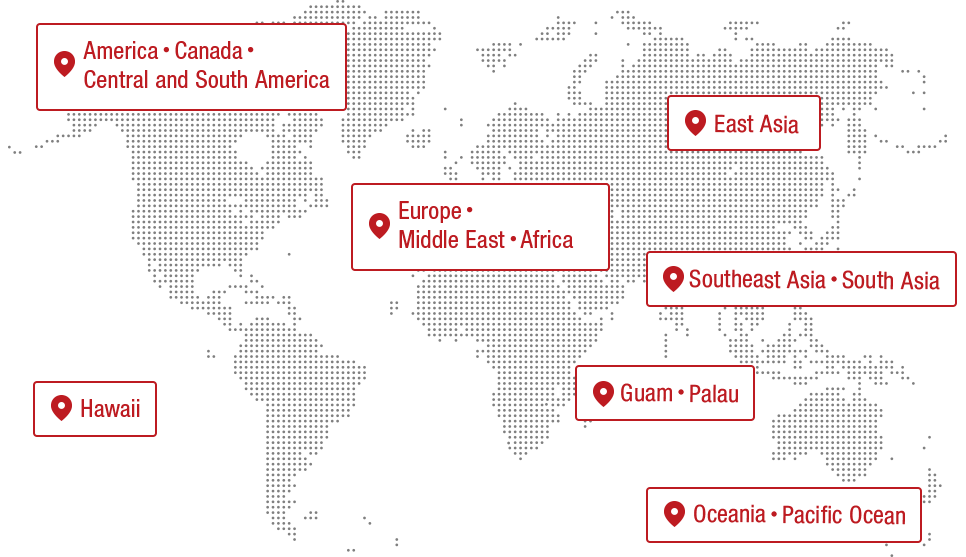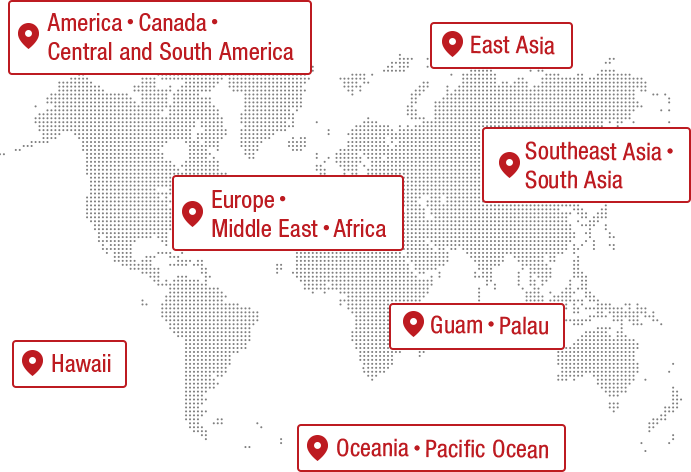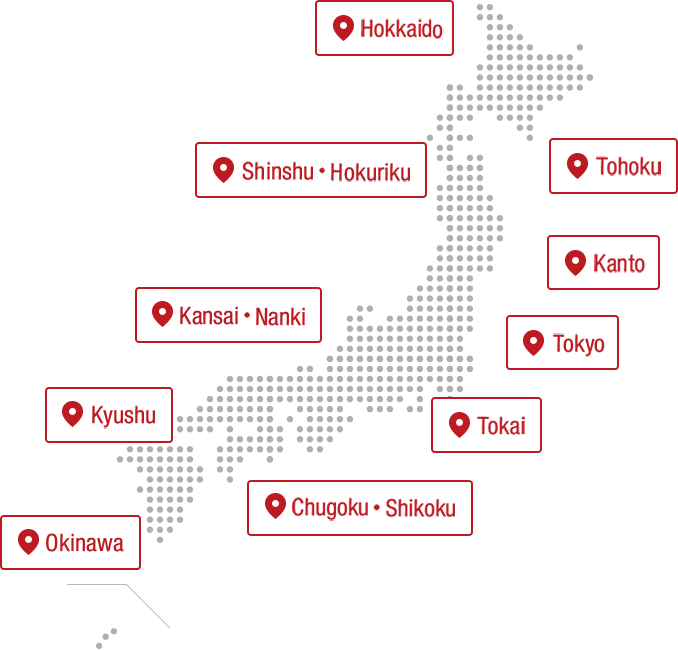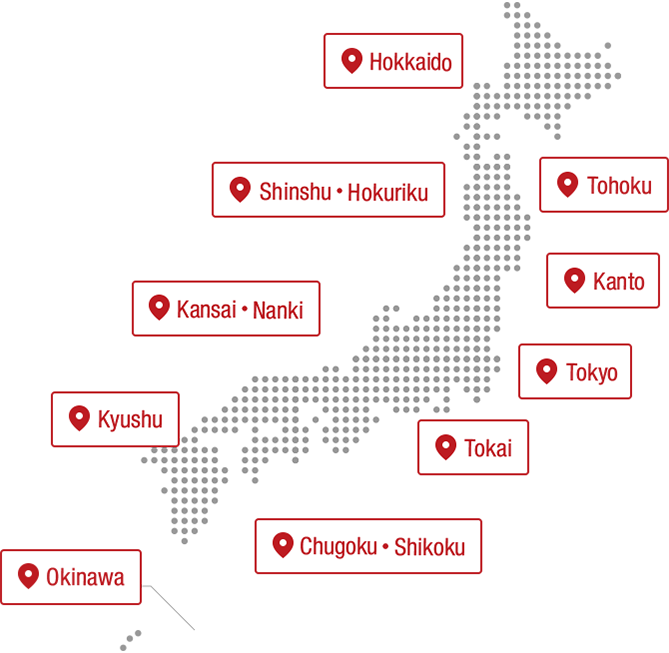
Ai Nishimura
Administrator of the blog "My Diary," which began in 2004. A writer who has traveled to all 47 prefectures and loves local culture and history.
Author of Shimane's "Geography, Place Names, and Maps" Mysteries (Jitsugyo no Nihonsha), My Town is the "Number One in Japan" Dictionary (PHP Institute), and Prefectures Explained in Neko Neko Japanese History (Jitsugyo no Nihonsha). Official blogger for Suntory Gourmet Guide, official top user for Retty, and official platinum blogger for Excite.
Ube City is supported by the huge industry, Ube Industries.
When the plane heading to Yamaguchi Ube Airport descended and the cityscape came into view, the first thing that caught my eye was a field of industrial complexes. This was exactly how I imagined Ube to be. I felt like I was heading into a huge industrial area, and the scenery was like a picture of a modern city. Among the buildings, the one that particularly caught my eye was the Kosan Bridge.
Ube Industries started out in coal mining, then expanded into the cement industry, and is now a major comprehensive chemical manufacturer that has expanded into various fields such as chemicals, energy, and pharmaceuticals.
The "Ube Industries Private Road", which transports "clinker", an intermediate material for cement, is the longest private road in Japan, stretching out at about 32 kilometers. It is on an unimaginable scale, with 35 trailers, each capable of carrying 88 tons, making 10 round trips a day from the limestone mines in Mine City to the industrial area along the coast. The "Kosan Ohashi Bridge", which can be seen from the sky, is also part of this road, and is characterized by its steep slope of 6% so that large ships can pass underneath.
You can learn about Ube Industries' technology at "UBE-i-Plaza (reservation required)." This is a facility where you can learn about the behind-the-scenes work that Ube Industries products are used in many products in our daily lives, even if we don't usually hear the name "Ube Industries."

We set off on our journey to Ube City, Yamaguchi Prefecture. Just as we were about to land, a huge group of factories came into view.

We could also see the Kosan Bridge, which spans the reclaimed land. This is a private bridge for Ube Industries, a major comprehensive chemical manufacturer that supports the city of Ube.

What on earth would make a company build such a large bridge? Ube Industries started out as a coal mining company in Ube, and has since expanded to become a company that currently supplies chemical products, construction materials, cement, and more. We went to "UBE-i-Plaza" to learn more about Ube Industries, which is also the foundation of the city of Ube.
"UBE-i-Plaza" is a tour facility located within the Ube headquarters. First, you can get a sense of its size with a large aerial photograph. The road in the photograph is the "Ube Industries Road," which runs from Mine City, Yamaguchi Prefecture. It is a private road built exclusively for Ube Industries to transport intermediate materials for cement.
Other exhibits include the history of Ube Industries and its products. By-products generated during manufacturing are converted into energy and used within the factory or sold. Residual materials are also chemically synthesized and reborn as other raw materials, ensuring efficient production.

You can also see in detail what products are being made. For example, medicines. We are co-developing glaucoma treatments and anti-allergy drugs with pharmaceutical companies.

They also produce ingredients for perfume. The one I tried was "watermelon." It had a fresh, fresh scent.

They also manufacture nylon resin, which is apparently used in some tennis rackets.

They even use them in smartphone batteries! I thought it would be such a huge industry that I would have no connection with them, but it turns out that the things they make are completely integrated into our daily lives.
UBE-i-Plaza requires a reservation, but anyone can visit if they make a reservation in advance by phone.
The city itself is a museum of greenery. Ube is a city of outdoor sculpture and contemporary art.
I had no idea that Ube was such an artsy city.
Sculptures are placed throughout the city to blend in with the surroundings. The fact that Ube became a city of sculpture is also related to its industry.
In the 1950s, Ube's economy was thriving due to the coal boom. However, at the same time, pollution problems such as soot dust were becoming serious. The local government was quick to take measures against pollution, and one of the measures was the "Green and Flower Movement" to green the city. The citizens of Ube cooperated greatly with these efforts, and donations were collected to purchase seeds and seedlings. The single sculpture "Bathing Woman" by Falconet, which was purchased with the funds, marked the beginning of Ube City becoming a city of sculpture.
In 1961, the "Ube City Outdoor Sculpture Exhibition" was held, and since then, a highly artistic sculpture festival has been held every two years. Currently held under the name "UBE Biennale," it maintains a high level of quality, with entries from all over the world. It's surprising that a sculpture exhibition was started over 50 years ago, but I was even more surprised that the idea of "using art in urban development" was a very avant-garde idea at the time.
I discovered that sculpture can have such a free sensibility and creativity, and I was also surprised at how close the relationship between art and the local people is.
The town is colored with greenery and art, and just beyond that are the Ube Industries factories... The interesting thing about Ube is that you can see many different sides to it all at once.
There are about 200 outdoor sculptures in Ube city, making the city itself seem like a museum. This is one in front of Ube-Shinkawa Station.

Each sculpture has a plaque attached, which tells you the name of the piece, its creator, the awards it has received, and more. You can enjoy the exhibits while you stroll around.

I went on a bike ride to see the sculptures scattered around the city. They are displayed in clusters and are located along major roads, so they are easy to find and can also be viewed on foot.

The course this time is along the Majime River. There are many sculptures in just one kilometer of riding.

Along the river, there are small parks and benches for walking, and there is lots of greenery, making for a pleasant view.

Along the way, we came across Yamaguchi University School of Medicine along the river. Ube City is also famous for having a large number of hospitals and doctors for its size. Yamaguchi University School of Medicine was founded during the war as a predecessor to the Medical College, and is a prestigious school with a long history.

This is also a sculpture! The first thing I found along the Majime River was a piece stretching straight up into the sky. It was released in 2005 as "Going Through the Sky 2005."

Nearby is the next sculpture, "Melissa's Room," which won the Ube City Award at the Contemporary Japanese Sculpture Exhibition in 2005. Although it is simply called sculpture, it has a wide range of expression and is open to interpretation.

Another sculpture nearby was "UMIE (To the Lake)." It is made of aluminum and has rainbow colors.

The artificial material is colored with the natural colors of the rainbow, and is supported by natural stones. I interpreted this as a miniature version of the world we live in, where the opposing elements of nature and artificiality come together in one work of art.

In the city of Ube, artworks are placed on the side of ordinary sidewalks and near intersections... "Kodo" was released in 2003. A heavy, hard-looking stone was polished to a smooth finish.

There are artworks all around that you can enjoy using all your senses, whether you peek through holes or touch them.

The realistic dog is "Okubi III". The shiny black dog has a strong presence even from a distance.

It is so large when viewed up close that you have to look up. Because of the motif, this piece may be familiar to everyone.

I continued riding my bike around the city center and came upon a stone-walled alleyway that made me feel like I had traveled back in time.

This brick wall is a little lighter in color than normal. Apparently, this is called "pink brick."

Going up the hill, we came to Shogen-en, the birthplace of Watanabe Yusaku, the founder of Ube Industries. Although he made enough money to build a city, his house is very elegant and not very large. Watanabe advocated the idea of "coexistence and prosperity" by using his personal wealth not just for himself or his company, but for building cities and society, so that everyone can be happy.

I stopped by to get some souvenirs from Ube. "Kogetsudo Minamihama Store," a long-established Japanese and Western confectionery store. I came to meet Momoko Sakata, the chief manager of this store.

"Ube Sable" is a sweet made with Ube rice flour. The monaka shell is made with sable dough. It is crispy and rich with the flavor of high-quality cultured butter. It is also a great souvenir as it is light and not bulky, making it easy to give as a gift.

Sakata once left the prefecture and realized how good Ube was, so he returned to his hometown and took over the family business, Kogetsudo, while also planning events to promote his hometown. Sakata says he hopes that everyone who has been involved in the fun activities will soar into their own fields, and his goal may also be connected to the spirit of "coexistence and prosperity."
The growth of Ube and the achievements of Watanabe Sukesaku are expressed in architecture. The Ube City Watanabe Memorial Hall was designed by architect Murano Togo.
I went to see the Ube City Watanabe Memorial Hall, which was built to honor the great achievements and accomplishments of Ube Industries founder, Yusaku Watanabe. It is a music hall still in use and is designated as an Important Cultural Property of Japan.
Watanabe Suksaku is the man who founded the Okinoyama Coal Mine Association. However, he did not limit himself to managing the mines, but advocated a shift to manufacturing, so that jobs would be left for future generations, in an industry that would surpass the limited availability of coal. He used the enormous profits he made from these operations for the town, building infrastructure such as schools and hospitals. He fostered a spirit of "coexistence and mutual prosperity" between companies and the local community, and built the foundation for the Ube City we know today.
When Yusaku passed away in 1934, plans to build a public hall to honor his achievements were made, and architect Murano Togo was recommended as the architect. Murano Togo is the architect who designed the World Peace Memorial Cathedral, which was introduced in the Hiroshima series in "Nishimura Ai's Go-Go Trip," as well as the Nissay Theater in Tokyo and the Hakone Prince Hotel. Murano embodied the past, present (at the time of construction), and future of Ube's industry in his design, and expressed it in this memorial hall. It can be said that the fact that he was able to condense the changes in Ube's history into a design and leave it as a hall of fame that anyone can see, just a few minutes from Ube-Shinkawa Station, is a miracle for Ube.
Additionally, Ube City is home to many other works by Murano Togo, such as the Ube City Cultural Center, Historia Ube (former Ube Bank (Yamaguchi Bank)), and the Ube Industries Building. These are some of the attractions of Ube that are known only to those in the know.

In the past, Ube was experiencing serious air pollution problems as industry boomed. The city took measures to combat the problem and promoted greening of the city center.

That spirit has been passed down, creating a cityscape rich in nature with an abundance of flowers and greenery even today.

The city of Ube became an art town with outdoor sculptures on display when citizens donated money to buy flower seeds for the greening project, and sculptures were purchased from those funds. In other words, the city of Ube has its foundation in industry, and on top of that, it has expanded into nature and art.

Ube Industries, Ltd. was essential to the development of Ube today. The Ube City Watanabe Memorial Hall, built to honor the achievements of its founder, Watanabe Sukesaku, was designed by the famous architect Murano Togo.
It is a dynamic piece of architecture that uses curves and is carried throughout the entire building.

There is a bronze statue of Watanabe Sukesaku in the park in front of the hall. This statue was erected with donations from citizens. Despite his great success in managing coal mines, he believed that coal reserves were limited, and advocated industrial reform, leading to a transformation into the industrial sector and laying the foundations for the current Ube Industries.

First, the exterior. The three towers on either side and the monument in the middle represent the seven companies that Watanabe was involved with.

As you enter the building, you will notice that the entrance porch is curved to match the curve of the hall, and the lobby hall inside is also curved in the same way.

There were reliefs on the left and right of the main entrance. On the left side were miners from the coal mining era, and on the right side were factory workers. They represent Watanabe's words, "From finite mining to infinite industry," and represent the company's philosophy of taking on new challenges, thinking flexibly, and making changes.

Back in the day when people still wore geta (wooden clogs), in order to avoid the sound of their geta echoing in the marble lobby, people would go down to the basement from this entrance, change into indoor shoes, and then enter the hall's lobby as if they were coming up from inside a coal mine to the surface... You can get a glimpse of the town's story.

The lighting in front of the entrance was also designed by Murano Togo. It features designs of eagles, dots, and diagonal crosses.

This pattern of eagles, dots and crosses is also used in the lighting on the staircase.

The columns in the lobby are quite unique. The marble columns connect to the ceiling and spread out like mushroom caps, with a gradation effect.

There is a theory that this represents an undersea coalfield, meaning that it is the perspective of us looking up at the surface of the ocean from the bottom of the sea.

The ceiling of the stairs to the second floor has a barbell-shaped light fixture. It is longer in the center of the building and gets shorter as you get to the ends, making the space appear larger.
The second floor lobby. The colors are deeper than the first floor, giving it a completely different impression.

Inside the hall. The edge of the stage is also curved.
It seats about 1,300 people and apparently has very good acoustics.

"Ube of the Future" was created by combining marble from the lobby walls. It is the future of the city as envisioned by Murano Togo. The geometric design with straight lines is modern. The building represents Ube's growth with the times, from the coal mining era to the industrial era, and then to the Ube of the future.

The tree planted in front of the memorial hall is a metasequoia. Metasequoia trees are trees that have been carbonized over the years and turned into the coal of Ube. It is very meaningful and symbolic that they were planted here.
Read the second part here
The contents published are accurate at the time of publication and are subject to change.



















